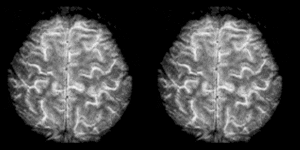
Until now, little was scientifically known about the human potential to cultivate compassion — the emotional state of caring for people who are suffering in a way that motivates altruistic behavior.
A new study by researchers at the Center for Investigating Healthy Minds at the Waisman Center of the University of Wisconsin-Madison shows that adults can be trained to be more compassionate. The report, published Psychological Science, a journal of the Association for Psychological Science, investigates whether training adults in compassion can result in greater altruistic behavior and related changes in neural systems underlying compassion.
“Our fundamental question was, ‘Can compassion be trained and learned in adults? Can we become more caring if we practice that mindset?’” says Helen Weng, lead author of the study and a graduate student in clinical psychology. “Our evidence points to yes.”
In the study, the investigators trained young adults to engage in compassion meditation, an ancient Buddhist technique to increase caring feelings for people who are suffering. In the meditation, participants envisioned a time when someone has suffered and then practiced wishing that his or her suffering was relieved. They repeated phrases to help them focus on compassion such as, “May you be free from suffering. May you have joy and ease.”
Participants practiced with different categories of people, first starting with a loved one, someone whom they easily felt compassion for, like a friend or family member. Then, they practiced compassion for themselves and, then, a stranger. Finally, they practiced compassion for someone they actively had conflict with called the “difficult person,” such as a troublesome coworker or roommate.
“It’s kind of like weight training,” Weng says. “Using this systematic approach, we found that people can actually build up their compassion ‘muscle’ and respond to others’ suffering with care and a desire to help.”
Compassion training was compared to a control group that learned cognitive reappraisal, a technique where people learn to reframe their thoughts to feel less negative. Both groups listened to guided audio instructions over the Internet for 30 minutes per day for two weeks. “We wanted to investigate whether people could begin to change their emotional habits in a relatively short period of time,” says Weng.
The real test of whether compassion could be trained was to see if people would be willing to be more altruistic — even helping people they had never met. The research tested this by asking the participants to play a game in which they were given the opportunity to spend their own money to respond to someone in need (called the “Redistribution Game”). They played the game over the Internet with two anonymous players, the “Dictator” and the “Victim.” They watched as the Dictator shared an unfair amount of money (only $1 out of $10) with the Victim. They then decided how much of their own money to spend (out of $5) in order to equalize the unfair split and redistribute funds from the Dictator to the Victim.
“We found that people trained in compassion were more likely to spend their own money altruistically to help someone who was treated unfairly than those who were trained in cognitive reappraisal,” Weng says.
“We wanted to see what changed inside the brains of people who gave more to someone in need. How are they responding to suffering differently now?” asks Weng. The study measured changes in brain responses using functional magnetic resonance imaging (fMRI) before and after training. In the MRI scanner, participants viewed images depicting human suffering, such as a crying child or a burn victim, and generated feelings of compassion towards the people using their practiced skills. The control group was exposed to the same images, and asked to recast them in a more positive light as in reappraisal.
The researchers measured how much brain activity had changed from the beginning to the end of the training, and found that the people who were the most altruistic after compassion training were the ones who showed the most brain changes when viewing human suffering. They found that activity was increased in the inferior parietal cortex, a region involved in empathy and understanding others. Compassion training also increased activity in the dorsolateral prefrontal cortex and the extent to which it communicated with the nucleus accumbens, brain regions involved in emotion regulation and positive emotions.
“People seem to become more sensitive to other people’s suffering, but this is challenging emotionally. They learn to regulate their emotions so that they approach people’s suffering with caring and wanting to help rather than turning away,” explains Weng.
Compassion, like physical and academic skills, appears to be something that is not fixed, but rather can be enhanced with training and practice. “The fact that alterations in brain function were observed after just a total of seven hours of training is remarkable,” explains UW-Madison psychology and psychiatry professor Richard J. Davidson, founder and chair of the Center for Investigating Healthy Minds and senior author of the article.
“There are many possible applications of this type of training,” Davidson says. “Compassion and kindness training in schools can help children learn to be attuned to their own emotions as well as those of others, which may decrease bullying. Compassion training also may benefit people who have social challenges such as social anxiety or antisocial behavior.”
The Latest Bing News on:
Compassion training
- Teen shows the way in Sultanpur Lodhi schoolson April 27, 2024 at 9:18 pm
Taking initiative and showing compassion, Lehnaaz Rana ... Our team has also been imparting proper training and helping selected teachers get well-versed with new teaching techniques to boost interest ...
- Golisano Children's Hospital gains autism certification for improving compassion and careon April 26, 2024 at 9:00 am
They also welcomed a “sensory-friendly ambulance” for transporting children with autism that has unique features to minimize sounds, lights and other things that can trigger a sensory overload for ...
- Compassion Fatigue: What to Do When Care Becomes Overwhelmingon April 26, 2024 at 5:40 am
Preventing compassion fatigue or managing it when it occurs can be difficult in the high stress environment of the medical field.
- Doctor teaches compassion to next generation of physicianson April 24, 2024 at 10:33 am
It’s fascinating,” said a surprised Dr. Sari Hart. “I was not looking for an award in my work.” Hart is an emergency medicine physician at Edward Hines Jr. VA Hospital and assistant ...
- Training to become a hospice volunteer available through VNAHSR in St. Albanson April 24, 2024 at 7:00 am
VNA & Hospice of the Southwest Region (VNAHSR) provides training for those interested in becoming hospice volunteers. Training will be held on Friday, May 17, 2024 from 8 a.m.-4 p.m.
- Better health care for Black moms, babies takes commitment and compassionon April 21, 2024 at 5:00 am
Not that many decades ago, it was common for a midwife and close female family members to come together in the home to provide support for Black women during childbirth. We need that same partnership ...
- Opinion: Amid heart-wrenching CT tragedy, compassion and selflessness recalledon April 18, 2024 at 9:19 am
Let the legacy of this Connecticut resident remind us that compassion and selflessness can be powerful notes in the composition of a meaningful life.
- How self-compassion can help activists deal with stresson April 15, 2024 at 5:00 pm
To understand how activists can better manage the challenges of their work, our research examines how self-compassion could be used to help them alleviate stress and avoid burnout. It's important ...
- 'It is fitting': Westmoreland courthouse law library renamed for woman who showed caring, compassion to allon April 12, 2024 at 12:38 pm
If a defendant unable to afford representation walked into the law library at the Westmoreland County Courthouse looking for help, librarian Betty Ward treated them the same as an attorney with ...
- Compassion Fatigueon April 9, 2024 at 5:32 am
or devoted to interests or hobbies outside of work have also been found to lessen the symptoms of compassion fatigue. Does resilience training help? Created with Sketch. A 2015 study in the ...
The Latest Google Headlines on:
Compassion training
[google_news title=”” keyword=”Compassion training” num_posts=”10″ blurb_length=”0″ show_thumb=”left”]
The Latest Bing News on:
Altruistic behavior
- International Bat Appreciation Day: The crucial role of bats in natureon April 17, 2024 at 11:42 am
Each year on April 17th, International Bat Appreciation Day reminds us of the roles bats play in our daily lives ...
- ChatGPT exhibits higher altruism and cooperativeness than the average humanon April 15, 2024 at 9:54 am
“On the optimistic side, when AI deviates from human behavior, the deviations are in a positive direction: acting as if it is more altruistic and cooperative. This may make AI well-suited for roles ...
- Altruistic behavioron January 4, 2024 at 11:45 am
Our behavior seems to be built by evolution, and it's sometimes paradoxical. To borrow from the hard sciences, our behavior exhibits complementarity. We are largely felicitous to our family and ...
- Honey bees inherit altruistic traits from their motheron December 20, 2023 at 7:57 am
This behavior, altruistic in nature, ensures the queen's optimal reproductive success, while the worker bee remains without offspring. Given the hive structure, the queen is usually the matriarch ...
- Narcissistic Altruism: On Doing Right Things For The Wrong Reasonson November 25, 2021 at 10:54 am
The direction of the correlation between measures of narcissism and any measure of prosocial or altruistic behaviors is negative, so the more self-centered, entitled, and megalomaniac you are ...
- The Science of Good Deedson February 10, 2021 at 9:39 am
Ultimately, the process of cultivating a positive emotional state through pro-social behaviors -- being generous -- may lengthen your life." Altruistic emotions -- the "helper's high" -- seem to ...
- Cooperation, Conflict, and the Evolution of Complex Animal Societieson February 3, 2020 at 12:10 am
Scientists since Darwin have wondered why animals like these perform cooperative behaviors that may be detrimental to their own evolutionary fitness. One key to understanding such altruistic ...
- How Could You Do That?!on December 6, 2019 at 10:53 am
Even the motivation for seemingly altruistic behaviors (such as letting people in line in front of you, and sharing food and other resources) can be found in the common sense of "I do for you ...
- How Does Social Behavior Evolve?on November 1, 2019 at 4:04 pm
This risky behavior benefits other individuals in the squirrel’s group. Other examples of altruistic behavior include sharing nesting space and helping to raise offspring of an unrelated individual.
The Latest Google Headlines on:
Altruistic behavior
[google_news title=”” keyword=”altruistic behavior” num_posts=”10″ blurb_length=”0″ show_thumb=”left”]











